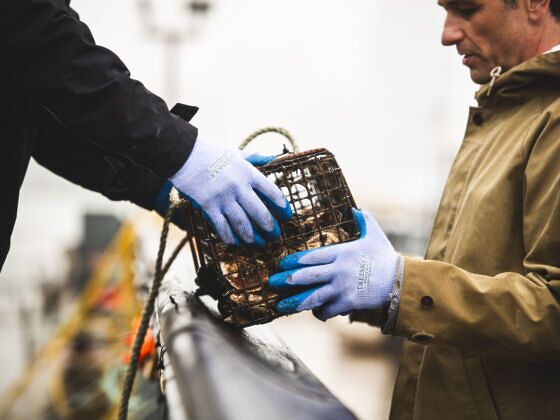It’s not entirely apparent today, but the harbor waters surrounding New York City once accommodated more than 200,000 acres of oyster beds. In the 1800s, oysters were an abundant treat, and New Yorkers ate them with reckless abandon – in fact, they enjoyed their oysters far too much. By 1910, the oyster population had plummeted due to over harvesting and all of the toxic sewage the city dumped into the water. By 1927, the last of the city’s oysters fisheries shut down. But now, an organization called the Billion Oyster Project is working to restore New York’s once thriving oyster population. And that matters for many reasons.


Why a Non-Profit Wants to Grow a Billion Oysters Along NYC's Coast by 2035
For the average person, oysters are merely a delicious treat, probably slurped down with a splash of lemon juice and a glass of Champagne. But oysters serve much more important environmental purposes, too. First, reefs constructed from oyster shells provide a safe habitat for all kinds of marine life – in New York, crabs, puffer fish, and seahorses have all been spotted around oyster reefs. Oysters can also filter some pollutants from water, including nitrogen, which means cleaner water.
Oysters can also help New York City with one problem that is especially relevant right now: Their shells are a natural storm barrier, protecting against high waves, reducing erosion, and lowering the risk of flooding. So you might see why New York City would be particularly invested in restoring oyster beds to New York Harbor. And that’s where the Billion Oyster Project comes in.
Murray Fisher and Pete Malinowski founded the BOP in 2014. The pair met at The Urban Assembly New York Harbor School, where they were teachers. They were particularly interested in getting public school students involved in oyster restoration, and today 100 schools have partnered with the BOP to provide scientific and environmental education to K-12 students.
So far, the BOP has restored 75 million live oysters to the harbor, and restaurants donate used oyster shells to the project. This way, after the oysters are enjoyed by diners and the shells go to good use instead of being sent to landfills. The program launched in 2015, and, so far, it has collected 2 million pounds of oyster shells. In 2022, the BOP has already gathered 300,000 pounds of shells from 50 different restaurants around the city.
One of the most ambitious aspects of the BOP is that with the help of volunteers, it’s actually building oyster reefs in New York Harbor. So far, the project has built around 15 reefs across each of the five boroughs in places like Sunset Park, Governors Island, Coney Island, and Brooklyn Bridge Park. The BOP also runs four oyster nurseries, where volunteers can harvest shells to contribute to the reefs.
Recently, the BOP partnered with the Scotch whisky distillery Talisker on its One For The Sea campaign, which encourages its customers to adopt more sustainable living practices. As part of that partnership, Talisker will serve as the Shell Collection Program’s lead sponsor. Ultimately, the BOP hopes to restore one billion oysters to New York Harbor by 2035.